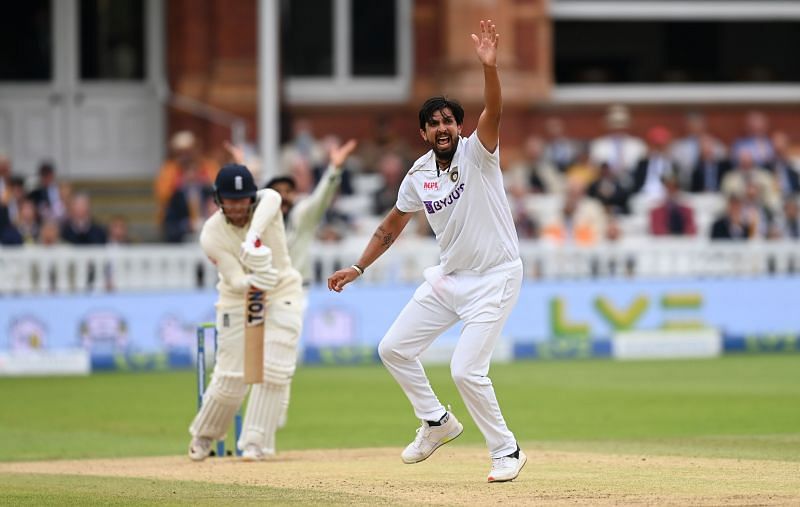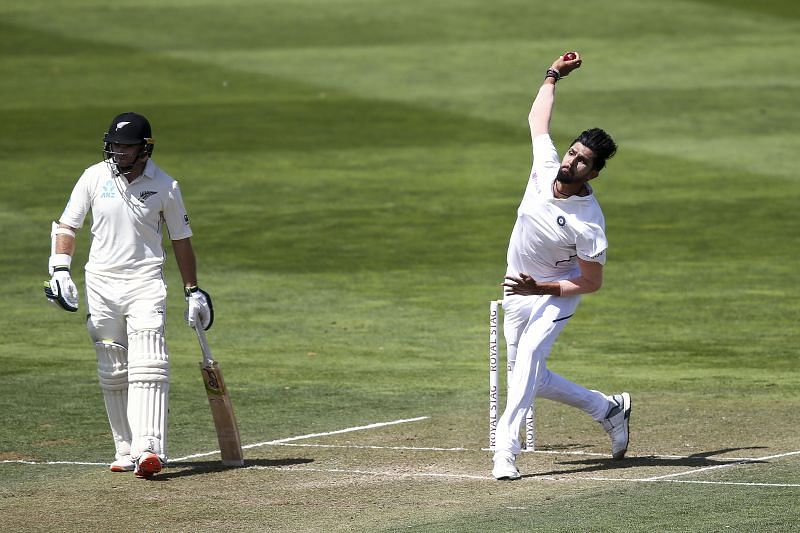
Ace in the hand: Headingley debacle highlights why Ishant Sharma is India's most important Test pacer

Ishant Sharma made his Test debut in May 2007. No pacer apart from the legendary Kapil Dev has played more red-ball matches for India than him. And in the 104 Tests Ishant has played, he has experienced soaring peaks and plunging valleys.
England's first innings of the ongoing Headingley Test against India saw the 32-year-old plummet to arguably the deepest, darkest, most depressing valley of his career. Over the 22 miserable overs he bowled, Ishant conceded 92 runs at an economy rate of 4.18, without sniffing a wicket or even bowling a single maiden.
Ishant Sharma didn't seem to have his run-up; he bowled four no-balls. He didn't seem to have any confidence either as he labored in, ball after ball, with captain Virat Kohli repeatedly throwing the ball to his seniormost pacer in the hope that the Ishant we all know and love would reappear.
But that version was hidden in the inner sanctum of Ishant's visibly struggling figure as he dished out freebie after freebie, helping England take a massive lead. To make matters worse for India, he bowled immediately after every break, setting an out-of-pitch tone for the remainder of each painful session.
Ishant Sharma will want to forget this performance in a hurry, and if there's a second innings in the 3rd Test, he will strain every sinew in his well-traveled body to set the record straight.
If anything, the Headingley Test has reinforced why Ishant Sharma is India's most important pacer. He may not be the quickest, the most accurate or the best overall. But he is the most important.
Ishant Sharma is the glue that holds the Indian pace attack together

The four members of the Indian pace attack complement themselves very well, and Ishant Sharma goes hand in glove with his three compatriots. As the only out-and-out swing bowler part of the quarter, the 32-year-old has a role to play that can neither be altered nor replicated.
Ishant is the go-to new-ball bowler for Virat Kohli. That's when he's most threatening, and that's when his skills are best utilized relative to those of his peers. Importantly, Ishant offers something unique and is the glue that holds the Indian attack together.
Jasprit Bumrah has developed a magical outswinger to the right-hander which perfectly complements his natural angle and inward movement. He certainly threatens the edge regularly and is rarely wayward, but he isn't the best at generating swing when there's not much on offer.
Mohammed Shami is a pure seam bowler who relies on seam position and angles to pick up his share of wickets. He is primarily a first-change bowler and is more comfortable in the middle overs than in the opening stages of the innings.
Mohammed Siraj has been a new-ball bowler for most of his life, but he has fallen back on his seam movement and wristwork in the ongoing series against England. Part of that might be down to the fact that Siraj has had to play a supporting role as the fourth pacer, but throwing him the new ball right now might not be the wisest idea.
Ishant Sharma is India's best shot at replicating the feats of England's bowlers. James Anderson, Sam Curran, Craig Overton and Ollie Robinson have exploited the conditions masterfully at Headingley, using their well-rounded toolboxes to prise open the Indian batting lineup with frightening ease.
But India were without answers for the entirety of England's first innings as each of the hosts' top-four batsmen notched up their respective half-centuries. Why? India's most important bowler, the one to whom their fortunes are irrevocably tied, didn't come to the party.
Ishant Sharma has several facets to his game that aren't visible at first sight. He's excellent against left-handers, to whom he comes around the wicket and plugs away in the channel while altering his angles and release points very slightly.
Ishant also gets some reverse swing later in the innings but this isn't exactly essential in England, where the overhead conditions assist conventional lateral movement for the majority of the Test match. And unlike the other swing bowlers in the side, such as Shardul Thakur, he can swing the ball both ways on a consistent basis.
Ishant Sharma's recent Test exploits indicate his value

Since the start of 2018, assuming a minimum of 25 innings, Ishant Sharma has the third-best Test bowling average (20.72), behind only Pat Cummins (20.0) and Jason Holder (19.17). Under Virat Kohli's captaincy, only Jasprit Bumrah has a better bowling average and more five-wicket hauls among fast bowlers.
Ishant has a combined 130 wickets in South Africa, England, New Zealand and Australia. On the 2018 tour of England, he scalped 18 wickets. Soon after, he picked up 11 wickets in two Tests in the West Indies, followed by a historic nine-wicket haul in the home pink-ball Test against Bangladesh.
Even in the recent past, Ishant Sharma has been threatening for the most part. He took three crucial wickets in the final of the World Test Championship and another five in the second Test at Lord's. It would be criminal to write him off on the basis of one bad performance, irrespective of just how bad the performance was.
There's been a lot of talk recently about which Indian pacer is the most expendable, for the world's best Test spinner is currently languishing on the sidelines. Ishant has probably been pitchforked into the lead in that debate, and his place in the side for the next Test is under serious question.
But Ishant Sharma is the ace in Virat Kohli's hand. He is the card that gives all the other ones value, the card that is the most important in a deck. He is the weapon India hold close to their chest with the intention of deploying it when the time is right.
Until India can find a suitable replacement, Ishant Sharma should continue to be a vital part of the bowling attack. Recency bias shouldn't cloud our vision for the future - a vision that has Ishant at the forefront of India's impending Test conquests.